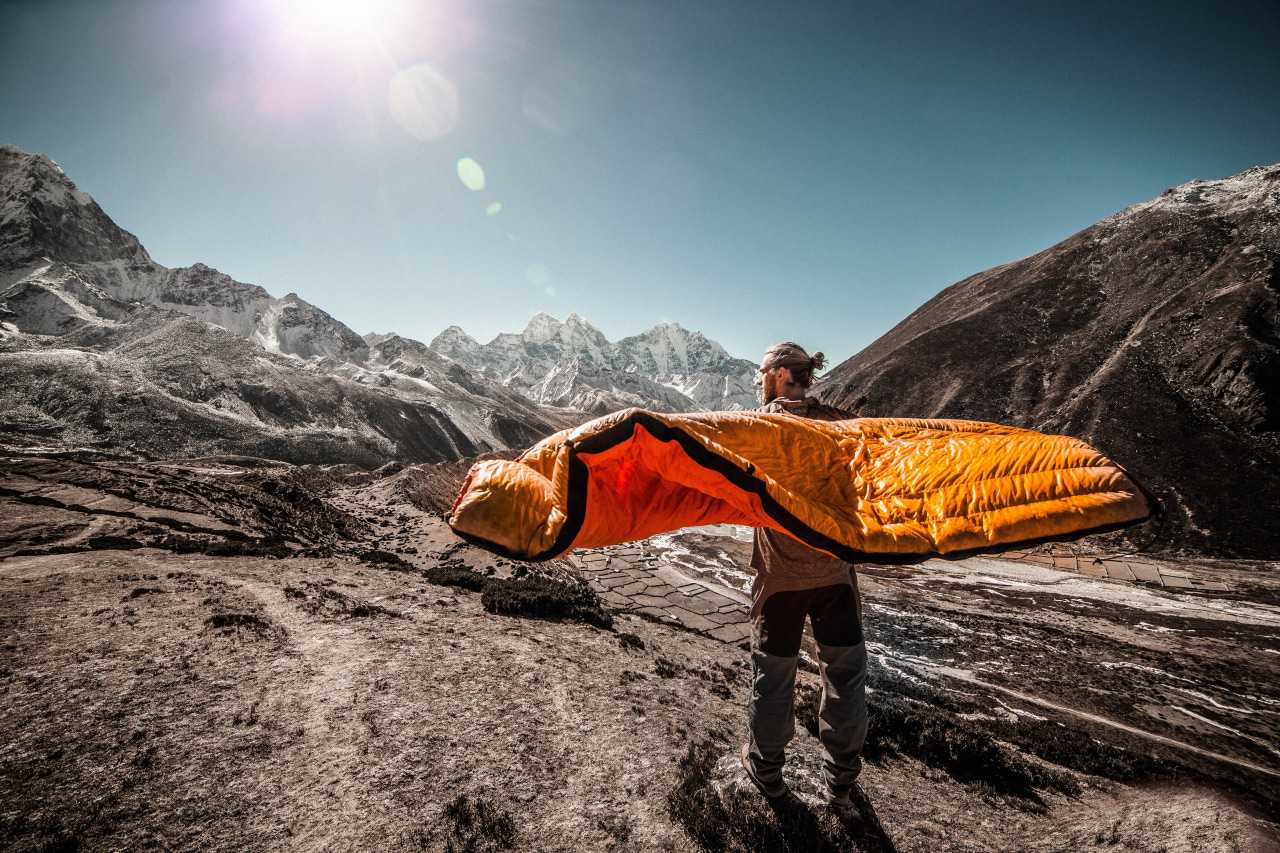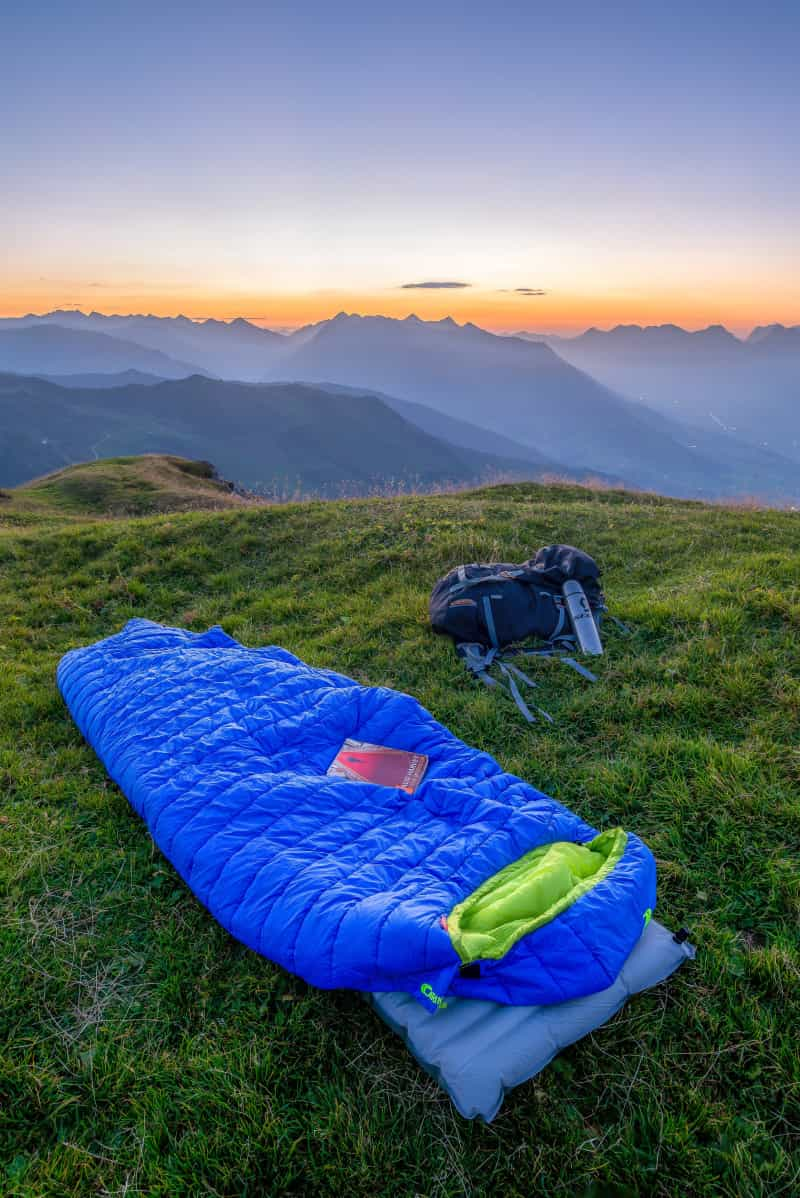Sleeping bags - Buying guide
A sound night’s sleep is an essential for any camping trip, but that won't be possible without a snug, effective sleeping bag to keep you cosy and warm during the night. With so many different types of sleeping bag up for grabs and lots to take into consideration (such as the temperature of your trip, your shape and size and how light the fabric is) you’ll want to acquaint yourself fully with all the different types of sleeping bags and how to narrow down your choice once and for all.

How to choose a sleeping bag
1. Choose between summer (one-season), three-season and winter (four-season) sleeping bags.
The time of year and temperature during your trip will determine what type of sleeping bag is most suitable. That’s because, aside from the different designs, there are three main types of sleeping bags:
Summer (one-season) sleeping bags are very compact and lightweight, but that’s because the material is designed for night temperatures of over 5°C. They often have zips and vents to improve ventilation in hot weather.
Three-season sleeping bags are designed for temperatures between 0 and 5°C, which typically covers the summer, autumn and spring.
Four-season sleeping bags are designed for temperatures under 0°C. You may need a four-season tent if you’re camping in winter or at high altitudes, where temperatures will be lower. A four-season tent is likely to be too warm for a camping trip in hot weather, but you’d be surprised how much the temperature can drop during the night, even in the summer, so always do your research. If there is a chance of cooler evenings, consider buying a four-season sleeping bag with zips, vents and other features so there’s always the option of increasing the airflow on a warmer night.
2. Decide on a material.
Different materials have different benefits.
Down sleeping bag: Down sleeping bags are very easy to pack down into your backpack and very effective at keeping you warm too. However, they take longer to dry than a synthetic sleeping bag if they get wet from condensation or leaks in your tent – two things that can strike at any time.
Synthetic sleeping bag: The wisest choice for camping in wet weather and cheaper overall, synthetic sleeping bags may be slightly less effective than a down sleeping bag at keeping you warm, but we’d still recommend this as the best option for most campers because they dry more quickly and they’re better at repelling moisture.
3. Consider the different features you might need.
Sleeping bags can come with all sorts of extra features. Some are more necessary than others, and this will largely depend upon the temperature and how much extra comfort you’re looking for.
A hood: Unless you’re only camping in high temperatures in the summer and need to keep cool, it’s likely you’ll need a sleeping bag with a hood. A hood will wrap around your head, keeping your head and face warm during the night.
Sleeves and straps: Sleeves and straps can be used to attach your sleeping bag to your air bed or other camping bed so that you don’t slide off during the night.
Anti-snag tubes: Also called neck baffles, anti-snag tubes can be tightened like a drawstring to make your sleeping bag fit more snugly in certain areas.
Pockets: Pockets with zips are handy for storing items you’ll need access to during the night, such as a torch, ear plugs or mobile phone.
Velcro tabs over the zip: Velcro will keep your zip in place if you’re prone to tossing around in the night.
Contoured foot box: A sleeping bag with a contoured foot box will reduce the air around your feet, keeping them toasty during the night.
Zips: Not all sleeping bags have zips, but those that do are easier to climb in and out of at night. Some sleeping bags have zips on both sides, which gives you greater flexibility on how to get out of your sleeping bag. A two-way zip is also helpful in case you want to increase the ventilation around your feet or another specific area.
Foot vents: Useful for summer camping trips, foot vents increase the airflow around your feet, increasing the ventilation.
4. Find the right height.
If you don't want to feel crammed in like a sardine, your sleeping bag should match your height. Check the product specification for a sleeping bag size that’s as close as possible to your height. For a six-foot person, this will be a regular six-foot sleeping bag.
Even though a sleeping bag is labelled as six foot, there will still be extra space inside to give you wriggle room, so there’s no need to account for that.
You don’t want a sleeping bag that’s too long because there will be more air around your feet, making them more susceptible to the cold in the night.
5. Decide between a women’s sleeping bag or a unisex sleeping bag.
Women’s sleeping bags have a slimmer and smaller fit that's designed for anyone with wider hips and narrower shoulders. They also come in shorter sizes, so it may be worth considering this option if this closely matches your description.
6. Test out your sleeping bag for a good fit.
Before you make a final decision, it’s always worth testing your sleeping bag personally to make sure that it feels comfortable. Try out a few different styles for yourself and be sure to check out that the zips are all in working order.
A sleeping bag shouldn’t completely mummify you, but neither should it be very loose. The ideal fit is snug but not uncomfortably tight, so that there’s a small layer of air around your body.
The tighter the fit, the warmer you will stay at night, because it reduces the air around your space.
Different types of sleeping bags
The shape of your sleeping bag is a matter of comfort, personal preference, temperature and the time of year. However, we’d recommend mummy sleeping bags for most camping trips because they mould to the shape of the human body, keeping campers warmer during the night, and they’re compact and lightweight.
Rectangular sleeping bags
Average cost: £25-50
Rectangular sleeping bags, also called square sleeping bags, are easy to tell apart by their rectangular shape. They usually have zips on both sides for easy ventilation, but they’re not as good at conserving heat as other sleeping bag designs, because there are large pockets of air between the fabric and the body.
Mummy sleeping bags
Average cost: £25-50

The mummy sleeping bag, as the name suggests, provides a snug fit that fits closely to the human body. That means it’s very effective at keeping you warm during the night. They don’t provide much wriggle room, however, so if you’re uncomfortable with a tight fit or you’re going to be camping in hot weather, you may feel too constricted.
Mummy sleeping bags have less fabric than a rectangular sleeping bag, so they’re also lighter and more compact to carry around.
Semi-rectangular sleeping bags
Average cost: £30-40
A semi-rectangular sleeping bag finds the middle ground between a mummy sleeping bag and a rectangular sleeping bag. That means there’s a little more freedom for movement without compromising on thermal comfort.
Double sleeping bags
Average cost: £30-60
A double sleeping bag fits two people, so it's is a good option if you’re used to sleeping with your partner or you want to stay close to a child during the night. Some double sleeping bags also have a zip down the middle that can convert the bag into two singles when necessary. However, they’re usually rectangular in shape, so they’re less effective at keeping in the heat. This means we wouldn’t recommend them unless you’re accustomed to sleeping with a partner or child.
Camping quilts
Average cost: £60-100
Camping quilts are well suited to long-distance hikers, because they’re the lightest sleeping bag design. Unlike classic sleeping bags, camping quilts don’t wrap around your body. One side stays open, so that campers can fold the quilt up and around their body.
There’s more freedom for ventilation, but you’ll definitely want to find a camping quilt with straps or hooks that can keep them in place during the night to improve insulation. Because most camping quilts have hooks and straps, effective insulation and an ultra-light design, they’re quite an expensive option.
Elephant’s foot sleeping bags
Average cost: £100-250
At first glance, an elephant’s foot sleeping bag looks the same as a mummy sleeping bag. The difference is that they are usually missing a hood and often zips too. That makes them very effective at keeping in heat, but uncomfortable for some users and difficult to exit quickly during the night.
Zipless sleeping bags
Average cost: £100-250
If you tend to toss and turn in the night or sleep on your side, a zipless sleeping bag might be a good choice. Instead of using zips, layers of fabric keep the sleeper enclosed in the bag.
However, this does mean that it’s easy for cold air to get into your sleeping bag if you move around too much, so we would recommend choosing a sleeping bag with a zip or an elephant's foot sleeping bag over this design.
A high-quality sleeping bag is key to getting a good night’s sleep in a tent, so once you’ve chosen carefully, check out our guides to buying camping beds and camping lights for other equipment that will help your night pass smoothly.
Browse our camping equipment guide
FAQ
How should my sleeping bag fit?
A sleeping bag should fit snugly so that there’s a small layer of air between your body and the fabric. It should be as close to your height as possible so that there isn’t any excess space around your feet.
What type of sleeping bag is the warmest?
A four-season mummy sleeping bag provides the greatest insulation. Features such as a hood or a contoured foot box can increase the warmth.